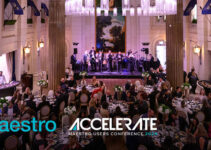
Excerpt from CoStar
New Strategies Combat Labor Shortages
Hoteliers are rolling out unique designs and new technology to account for demand trends.
Decreasing guest satisfaction in the hospitality industry is one of the symptoms of hotels not having the staff to keep up with consumers’ shifting demands. To alleviate both, hoteliers are leaning on new technology and unique designs to appeal to guests.
In a roundtable of U.S. hotel industry executives hosted by Hotel News Now in partnership with Pinkowski & Company, Jerry Cataldo, president and CEO of Hostmark Hospitality Group, said hoteliers will need to evaluate the spaces in their hotels and find a way to make revenue and boost the guest experience.
“We’re going to have to continue to look at our spaces and try to come up with unique ways to utilize them differently because some of these markets … are changing,” he said. “There’s definitely suburban markets where I don’t think those full-service hotels [will] ever have the demand for that much meeting space … because it’s changed dramatically.”
Maximizing Sales With Design
Talene Staab, brand leader of extended-stay brand Home2 Suites by Hilton, said Hilton has been looking at ways to maximize sales while giving guests more options to choose from. But there’s a line to toe when weighing profits against customer satisfaction.
“We have to be careful about how we look at [monetization] because there is that constant tension of how much money can we take per square foot?” she said.
Utilizing all the space in a hotel to provide unique experiences could pay off in the future when a guest returns to the market, said Rachel Humphrey, founder of the Women in Hospitality Leadership Alliance and board director for DEI Advisors.
“It’s part of that whole cycle of putting things out there that the guest experiences, they enjoy and they’re like, ‘OK, that dollar sign that I got on my invoice the next morning in my folio doesn’t feel quite as painful, [versus] had I not had that opportunity the night before,’” she said.
Jerry Cataldo, president and CEO of Hostmark Hospitality Group, said his company’s dual-branded Homewood Suites and Hampton Inn by Hilton Chicago Downtown West Loop rolled out a self-serve beer and wine wall in the lobby that has led to more time spent at the hotel.
“It’s awesome. People are staying in the lobby; there’s more interaction; there’s things that are happening; people are going and having a drink before they go out for dinner,” he said. “It’s totally changed the dynamic and the energy in that property and obviously it’s also generating revenue.”
While there’s no interaction with a bartender, it’s an elevated experience compared to buying drinks at a supermarket and adds a perk to a potential guest’s stay, Cataldo said.
Technology Innovation
An example of innovation that has affected the hotel guest experience is the digital key. In some cases, guests no longer need to check in at the hotel’s front desk since they already have their key prior to arriving.
Staab said the widespread introduction of digital keys was a major shift since it took away a main touch point in hotel service.
Although it potentially takes away an interaction between the consumer and staff, it also allows guests to choose whether or not they want that experience. When there’s the option to choose, guests who prefer to check in with the front desk will have less time to wait since those with mobile keys will skip that step, Staab said.
Click here to read complete article at CoStar.


